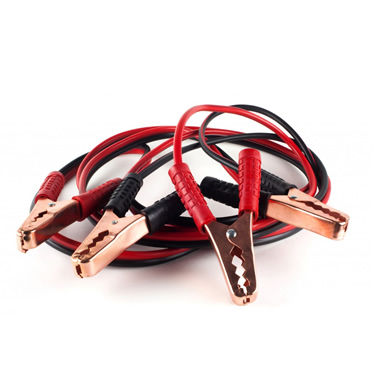Mechanics At Work - Jump Starts
Knowing how to jumpstart a car is a skill all drivers should have. Always ground the circuit and connect the jumper cables to the proper terminals.
Regardless of what type of car you have, eventually you may need to jumpstart it. While jumping a car is fairly easy, it can be a bit dangerous if basic precautions are not taken.
If certain battery problems are causing your car to lose battery charge (a leaking battery for example), you should have it serviced or replaced. The best advice is: if you are unsure in any way about what you are doing, call a pro as you can seriously damage your car as well as the other vehicle youre using for the jumpstart.


What you need:
A pair of high quality clean jumper cables. The clamps should be rust free.
Rubber work gloves
A pair of splash-proof polycarbonate safety goggles rated for auto repair
A wire brush
Another vehicle that has a fully charged battery that is the same voltage as the car being jumped.
A pair of high quality clean jumper cables. The clamps should be rust free.
Rubber work gloves
A pair of splash-proof polycarbonate safety goggles rated for auto repair
A wire brush
Another vehicle that has a fully charged battery that is the same voltage as the car being jumped.
Do:
Read your owners manual before attempting a jumpstart.Verify the voltage of the battery in the vehicle doing the jumping. If they do not match, serious damage can occur to both vehicles.
Park the cars close enough for the cables to reach, but they should not touch
Turn the engine off in the car with the good battery
Unplug any accessories (Eg. cell phone chargers)
Both cars should be in park or neutral with the parking brake engaged
Headlights, radios, and turn signals (including hazard lights) should be off in both vehicles


Donts:
Never lean over the battery of either car.Do not smoke while jumpstarting a car
Never jumpstart a battery if fluids are frozen. This could lead to an explosion
If the battery is cracked or leaking do not jumpstart the car. It could lead to an explosion.
In order to properly jump-start a car you will need to create a circuit that carries the current from the live battery over to the dead one. In order to do this successfully the cables should be connected in this exact order:
1. Connect one end of the red (positive) jumper cable to the red (+) positive post of the dead car battery
2. Connect the other end of the red (positive) jumper cable to the red (+) positive post of the fully charged car battery.
3. Connect one end of the black (negative) jumper cable to the black (-) negative post of the fully charged car battery.
4. Connect the other end of the black (negative) jumper cable to a metal part of the dead car that is unpainted, as far from the battery as the cable will reach. This will ground the circuit and help prevent sparking. Connecting it to the dead battery carries a risk of the battery exploding.
5. Verify that none of the cables are touching any engine parts that will move when the engine is started.
6. Start the car with the fully charged battery and let it sit idling for roughly five to ten minutes to charge the dead battery. Turn off the engine remove the cables in the reverse order and be careful to not let the cables touch which can result in sparking. Attempt to start the engine of the car with the dead battery.
Finally Remember to thank the person who helped jumpstart your car!
1. Connect one end of the red (positive) jumper cable to the red (+) positive post of the dead car battery
2. Connect the other end of the red (positive) jumper cable to the red (+) positive post of the fully charged car battery.
3. Connect one end of the black (negative) jumper cable to the black (-) negative post of the fully charged car battery.
4. Connect the other end of the black (negative) jumper cable to a metal part of the dead car that is unpainted, as far from the battery as the cable will reach. This will ground the circuit and help prevent sparking. Connecting it to the dead battery carries a risk of the battery exploding.
5. Verify that none of the cables are touching any engine parts that will move when the engine is started.
6. Start the car with the fully charged battery and let it sit idling for roughly five to ten minutes to charge the dead battery. Turn off the engine remove the cables in the reverse order and be careful to not let the cables touch which can result in sparking. Attempt to start the engine of the car with the dead battery.
Finally Remember to thank the person who helped jumpstart your car!

Mechanics at Work service the Brisbane area and most surrounding suburbs, so if you need your car up and running fast, fixed by a mechanic you can trust, then you need to call Calvin on 0435 812 747
Publisher: Mechanics At Work
Date Published: Sep 21 2017 11:08AM
Date Edited: Sep 21 2017 11:51AM
Date Edited: Sep 21 2017 11:51AM
